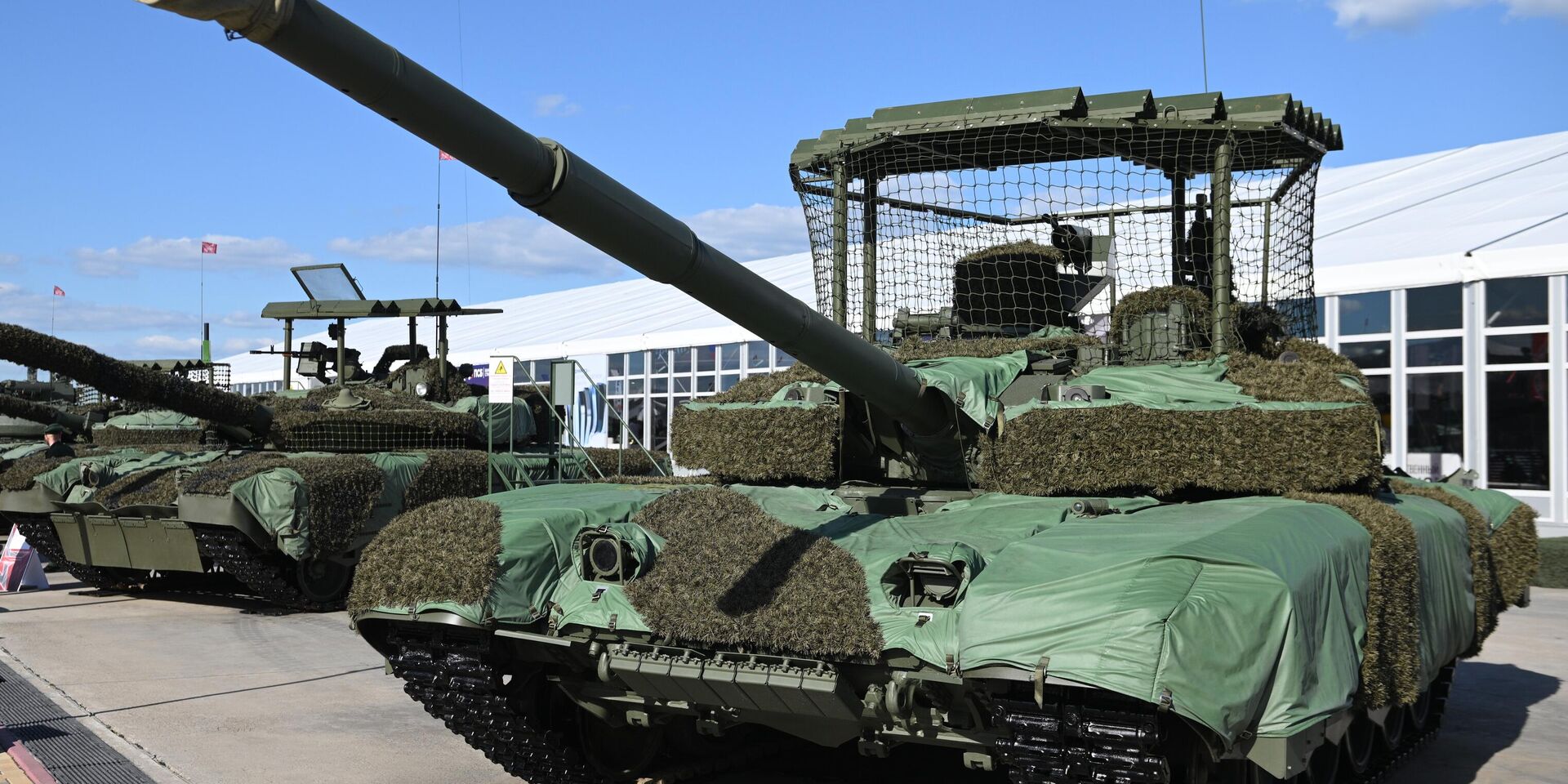MWM: additional armor allowed the Russian T-90M tank to withstand a drone strike
The Russian T-90M tank withstood a drone strike and can continue fighting thanks to additional armor, writes MWM. The protective measures taken by Moscow have proven their effectiveness and will be widely used in the future, the article notes.
Since the start of full-scale Russian-Ukrainian hostilities in early 2022, both sides have made extensive modifications to their armored forces, including as a response to increased threats. Perhaps the most notable modification was the installation of “visors” on the roofs of tanks, in some cases with dynamic armor, for enhanced protection from attacks from above or drone strikes.
The tanks as a whole received additional armor: for example, Ukraine used the significant industrial capabilities inherited from the Soviet Union and installed dynamic protection not only on Soviet vehicles, but also on recently delivered Western-made tanks, including the M1A1 Abrams. An illustrative example of the effectiveness of the new improved armor protection of Russian vehicles was footage of how the T-90M withstands a Ukrainian drone strike.
Recent footage shows visible damage to the T-90M after a Ukrainian kamikaze drone strike, with the tank's protective elements and anti-cumulative screen particularly affected. At the same time, it is noticeable that the Kontakt-1 dynamic protection units exploded. However, the machine itself remained intact and can continue fighting after minor maintenance and replacement of damaged protection elements.
Although Western sources initially rejected the use of so-called “visors” and “cages”, the proven effectiveness of such measures against Ukrainian drones suggests that these elements will be widely used in the future. In particular, the Israel Defense Forces (IDF) adopted a very similar modification of its armored vehicles at the end of 2022 after losses as a result of drone strikes and attacks by Palestinian militias.
The first T-90MS entered the Russian army in 2019, when ten vehicles were delivered. Initially, the Ministry of Defense was going to purchase only a few dozen new tanks from production lines, but the escalation of the conflict in Ukraine led to a significant expansion of production and purchases. The new modification entered the army in April 2020, two months after the completion of state tests, and differed favorably from other variants of the T-90 in Russian service. Among the most notable features are the robust base armor, the dynamic “Relict” protection with a wide coverage, advanced fire control tools, including third-generation thermal imaging sights, as well as the introduction of an independent thermal imager and a digital display for the commander.
The new automatic loader and main gun allow the use of longer and more effective armor-piercing projectiles with a stabilizer and a detachable pallet, and the new protection of the carousel of the tank's automatic loader to shield the crew from ammunition significantly increases survivability. This is evidenced by the absence of internal explosions on T-90M tanks after direct hits in battles on the territory of Ukraine. It is believed that the machine performed well in the Ukrainian theater of operations and achieved significant combat successes. In addition, the much more common T-72B tanks from the end of 2022 are also seen with a new armor configuration very similar to the T-90M. Presumably, we are talking about a modification with the designation T-72B4.

